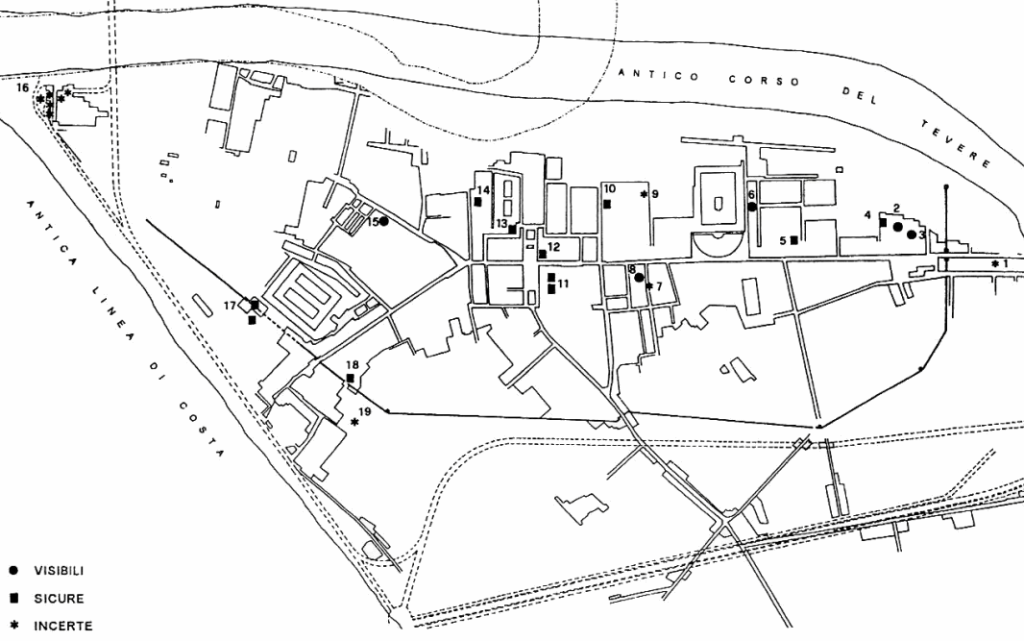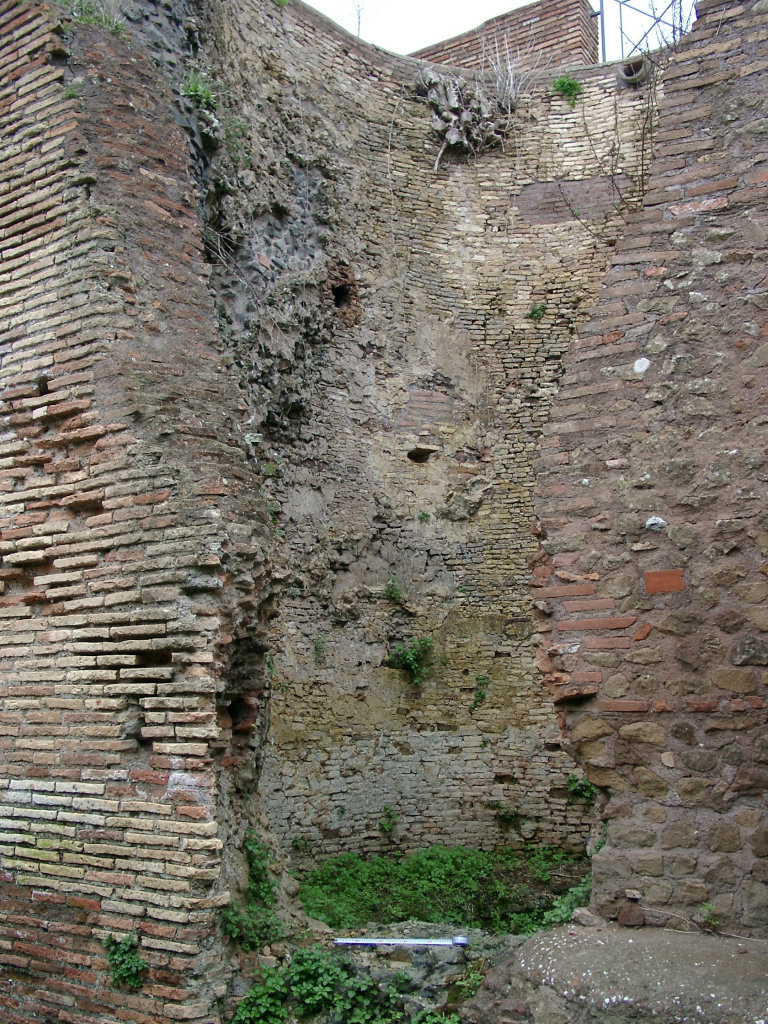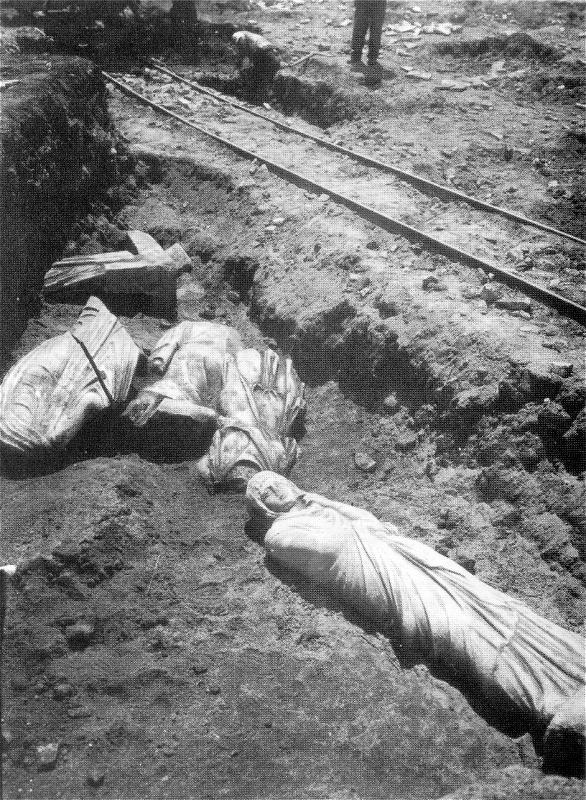THE LIME KILNS
At the end of the 18th century our attention is again drawn to the lime kilns: in 1775 Gavin Hamilton found four sculptures of the labours of Hercules near one of these. Sometimes people in search of marble to be burned dug horizontal and vertical tunnels, witness large holes in the walls of some buildings. Twenty-five kilns have been identified. Today remains can be seen of only five. It is not surprising that they are located near sites where much marble could be found and near roads. Marble dumps were created near the kilns. Fortunately some objects or parts of objects, stored near a kiln, were not burned. It is conceivable that people were reluctant to burn heads (portraits), feeling uncomfortable with that or out of superstition.
Without paying proper attention to these activities it is easy to suggest the wrong function of a building. This happened in the case of the so-called Seat of the Augustales. The building was identified as the guild-seat of the Augustales by Guido Calza, on the basis of statues and inscriptions found in and near the building. Margaret Laird, after a first warning by Paolo Lenzi, has shown that these objects were dumped in the building to be taken to nearby lime kilns. The entrance corridors and holes high up in the walls were used for the transport.
Unfortunately it has proven impossible to date the lime kilns. The burning seems to have started already during the fourth century. It is documented again at the end of the sixth and in the early seventh century, and probably continued in the ninth. The toponym Calcaria, documented in 1191, suggests that lime kilns had been present there for a long time. In 1427 kilns are documented in relation to the Capitolium. In the early 19th century Carlo Fea, then in charge of the excavations, had to prevent that a certain Giuseppe Vitelli threw marble decoration of the Capitolium in a kiln (he had also lifted large stretches of the paving of the Via Ostiensis).
 |
|
1. Porta Romana-necropolis, south side. Nearby a large dump of marble fragments was found. 2. Baths of the Coachmen, room to the north-west of the frigidarium. Nearby statues were found of Silvanus, Dionysus, Diana, and a naked young man. 3. Baths of the Coachmen, room to the north-east of the caldarium. 4. Antonine Warehouse, east side. Nearby many fragments were found of sculptures, slabs, sarcophagi, statues, and architectural elements. 5. Baths of Neptune, rooms to the east of the room with the mosaic of Amphitrite. Nearby many fragments were found of architectural elements and of a sarcophagus. 6. House of the Ovens, in the passage in the south part. Nearby many fragments were found of sarcophagi, architectural elements, inscriptions and statues. 7. Via del Mitreo dei Serpenti, between blocks VI and VII. 8. Mithraeum of the Snakes, room to the east. 9. Great Warehouse, east part. 10. Great Warehouse, west part. 11. House of the Triclinia, at least two kilns. 12. Forum, to the south-east of the Capitolium. Inside fragments were found of cornices, slabs and reliefs. The kiln does not seem to have been taken in operation. Old reports mention more kilns near the Capitolium. 13. Shop to the north-west of the Capitolium (I,VIII,1). Many fragments of travertine were found here. 14. Warehouse I,VIII,2, west part. 15. Via della Calcara, to the east of block III,X. Nearby fragments were found of arms and legs, and portraits of Trajan and Hadrian. 16. Near Tor Boacciana. Six kilns. 17. Maritime Baths. In 1775 Gavin Hamilton found four sculptures of the labours of Hercules nearby. 18. City wall, south-west part. 19. Near the Baths of the Marine Gate. |
| The distribution of the lime kilns. From Lenzi 1998, fig. 1. |

The remains of a lime kiln and a hole to reach it, in the House of the Ovens (II,VI,7).
Photo: Jan Theo Bakker.

A huge, conical lime kiln in Via della Calcara, to the east of the House of Serapis (III,X,3).
Seen through the entrance. Diameter 4.45, height 6.00 meters.
Portraits of Trajan and Hadrian were found here.
Photo: Daniel González Acuña.

Statues found in the Seat of the Augustales (V,VII,1-2).
Collected here to be taken to a nearby lime kiln.
From Lenzi 1998, fig. 4.